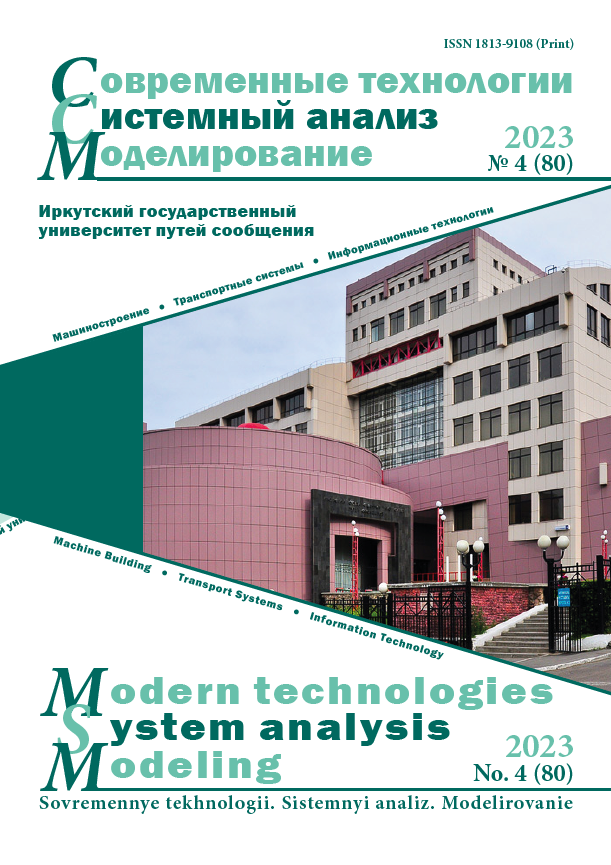Conditions for the use of the maximum possible thickness of brake pads in the braking system of a freight wagon trolley with 670V cylinders
Keywords:
lever gear, brake cylinder, elastic component, bending deformation, brake pad, stroke of the rod and screwAbstract
The operation of freight wagons with separate braking revealed the unresolved problem of rationing the output of the brake cylinder rod. The works to determine the design stroke of the cylinder rod, taking into account the features of modern designs, show a significant excess of the lower and upper limits of the rod stroke relative to the normative ones while significantly different elastic deformation of lever gears of different structures predetermine the impossibility of using one standard range of the stroke of the rod. In addition, the use of an auto regulator for such wagons, mainly hoppers, determines the impossibility of operating such wagons when using 710 cylinders with a constructive maximum rod stroke of 125 mm in their lever systems, the use of which is requested by regulatory documents. One of the possible ways to solve this problem is the use of a lever system with brake cylinders mounted on trolleys and a unified lever transmission. Such systems are promising for use on the railways of the Russian Federation making their research relevant. For such a scheme with a unified lever transmission and placement of 670V cylinders on a biaxial type 2 and type 3 State Standard 9246-2013 trolley, the actual stroke of the rod was determined in operation. The possibility of passing a steep long descent by a wagon with a developed scheme is evaluated. A table of mounting dimensions of the brake system in operation for a 60 ± 4 mm thick brake pad has been developed. Based on the table and the resulting stroke of the rod, taking into account the elastic deformation of the brake system, the actual total stroke of the rod and the screw of the brake cylinder in operation is determined. The conditions for the use of the maximum possible thickness of brake pads in operation are determined.
References
ГОСТ 31402-2013. Цилиндры тормозные железнодорожного подвижного состава. Общие технические условия (ред. от 29.10.2015). Введ. 2014–07–01. М. : Стандартинформ, 2014. 12 с.
Синицын В.В. Регулирование выхода штока тормозного цилиндра вагона // Железнодорожный транспорт. 2018. № 8. С. 52–53.
ГОСТ 34434-2018. Тормозные системы грузовых железнодорожных вагонов. Технические требования и правила расче-та. Введ. : 2019–08–01. М. : Стандартинформ, 2018. 31 с.
Типовой расчет тормоза грузовых и рефрижераторных вагонов. М. : ЦВ-ВНИИЖТ МПС РФ, 1996. 76 с.
Вагоны. Проектирование, устройство и методы испытаний / Л.Д. Кузьмич, А.В. Кузнецов, Б.А. Ржавинский и др. М. : Машиностроение, 1978. 376 с.
Карпычев В.А., Андреев П.А., Никитин Г.Б. К вопросу оценки и контроля тормозных нажатий колодок на колеса в зависимости от положений рычагов при регулировках рычажной передачи тележки 18-100 // Вестн. Науч.-исслед. ин-та ж.-д. трансп. 2013. № 5. С. 43–48.
Тулузин С.В., Горский Д.В. Оценка работоспособности тормозной рычажной передачи тележки грузового вагона на различных стадиях износа колодок и колес // Вестн. Науч.-исслед. ин-та ж.-д. трансп. 2015. № 2. С. 38–44.
Пат. 3499507 США. Тормозное устройство и регулировочные средства тележки железнодорожного вагона / Д.Г. Скотт, Ф. Тэмпл. Заявл. : 22.10.1968 ; опубл. 10.03.1970.
Freight catalog // Tradefin industrias : site. URL: https://tradefin.com.ar/wpcontent/uploads/2017/05/WabtecFreightCatalog.pdf (Дата обращения 26.09.2023).
Башкиров К.В., Болотов К.Н., Палатов Д.В. Тормозное оборудование для современного вагона // Вагоны и вагонное хозяйство. 2011. № 4. С. 26–28.
Синицын В.В., Кобищанов В.В. Тормозная система для потележечного торможения грузовых вагонов // Вестник БГТУ. 2020. № 3 (88). С. 21–28.
ГОСТ 9246-2013. Тележки двухосные трехэлементные грузовых вагонов железных дорог колеи 1520 мм. Общие технические условия. Введ. 2014–07–01. М. : Стандартинформ, 2014. 37 с.
Правила технического обслуживания тормозного оборудования и управления тормозами железнодорожного подвижного состава : утв. Советом по ж.-д. трансп. государств-участников Содружества : протокол от 6-7 мая 2014 г. № 60 (приложение № 18). Доступ из справ.-прав. системы АСПИЖТ в локал. сети.
ТУ 2571-028-00149386-2000. Колодки тормозные композиционные с сетчато-проволочным каркасом для железнодорожных грузовых вагонов. Технические условия.
ТУ 3184-503-05744521-95. Цилиндры тормозные со встроенным регулятором 670. Технические условия.
Синицын В.В. Методика расчета выхода штока тормозного цилиндра грузовых четырехосных вагонов с учетом упру-гой составляющей // Тяжелое машиностроение. 2015. № 6. С. 19–23.
Расчет и проектирование пневматической и механической частей тормозов вагонов / П.С. Анисимов, В.А. Юдин, А.Н. Шамаков и др. М. : Маршрут, 2005. 248 с.
Общее руководство по ремонту тормозного оборудования вагонов 732-ЦВ-ЦЛ : утв. на 54-м заседании Совета по железнодорожному транспорту государств – участников Содружества (п. п. 29.3 п. 1 протокола от 18-19.05.2011 г.). Доступ из справ.-прав. системы АСПИЖТ в локал. сети.


